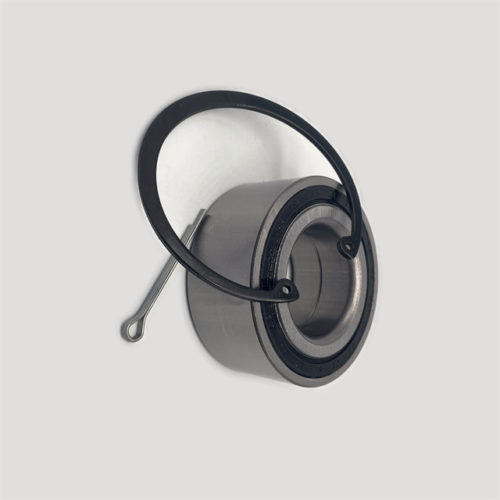Wheel bearings are an essential part of your vehicle’s suspension system that allows the wheels to spin smoothly and reduce friction between the wheels and the axle. Over time, wheel bearings can wear out or become damaged, leading to potential safety issues while driving.
Here are some signs to check if you need a wheel bearing replacement:
- Unusual Noise: A bad wheel bearing often produces a loud, rumbling noise that gets louder as you accelerate or turn. You may hear a grinding or humming sound coming from the affected wheel.
- Steering Wheel Vibration: If you notice a vibration in the steering wheel when you are driving, it may be a sign that the wheel bearing is damaged.
- Uneven Tire Wear: When a wheel bearing is damaged, it can cause uneven wear on your tires, which can lead to poor handling, decreased fuel efficiency, and a shorter lifespan for your tires.
- Loose Wheel: If the wheel bearing has completely failed, the wheel may become loose or wobbly, which can be extremely dangerous while driving.
- ABS Light: Some vehicles have an anti-lock braking system (ABS) that uses sensors to detect the speed of each wheel. If a wheel bearing is damaged, it can cause the ABS sensor to malfunction, resulting in an illuminated ABS warning light on your dashboard.
If you notice any of these signs, it’s important to have your vehicle inspected by a qualified mechanic as soon as possible. A damaged wheel bearing can lead to more serious problems and compromise the safety of your vehicle.
How To Grease Mountain Bike Wheel Bearings
Properly greasing the wheel bearings on your mountain bike can help keep them running smoothly and extend their lifespan.
Here’s how to grease your mountain bike wheel bearings:
- Remove the Wheel: Start by removing the wheel from your mountain bike. Use a wrench or quick-release lever to loosen the bolts holding the wheel in place.
- Remove the Axle: Once the wheel is off, remove the axle from the hub. Depending on your bike, this may involve removing the quick-release skewer or threading the axle nuts.
- Remove the Seals: Use a Flathead screwdriver to carefully pry off the seals covering the bearings. Be gentle to avoid damaging the seals or bearings.
- Clean the Bearings: Use a clean rag or paper towel to wipe away any dirt or grime from the bearings. If the bearings are really dirty, you can use a degreaser to clean them.
- Apply Grease: Apply a small amount of bicycle-specific grease to each bearing. Use your fingers or a clean tool to work the grease into the bearings.
- Reassemble the Wheel: Once the bearings are greased, replace the seals and reassemble the wheel. Make sure the axle is properly seated in the hub and that the bolts or quick-release lever are tightened to the recommended torque.
- Test the Wheel: Spin the wheel and check for any resistance or unusual noise. If everything feels smooth and quiet, you’re good to go!
It’s important to regularly maintain your mountain bike’s wheel bearings to ensure optimal performance and avoid potential safety hazards. Plan to grease your wheel bearings every six months or as recommended by your bike’s manufacturer.
